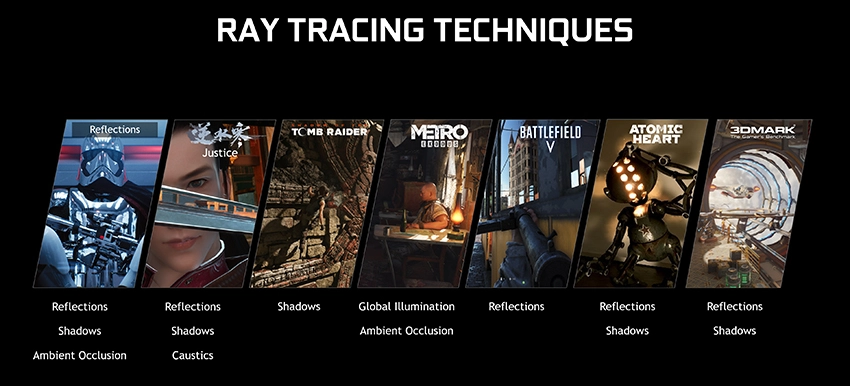Realism Redefined: The Magic of Ray Tracing Games

Introduction
Ray tracing probably forms one of the largest revolutions in gaming graphics in recent history. Promising a new dimension of realism believed to unimaginable through advanced lighting, complex detail in shadows, and perfectly flawless reflections.
What was once a technique relegated to CGI for movie. Work suddenly became possible in real-time for gaming via powerful GPUs such as those coming from NVIDIA’s RTX series line. Below, one will find out. Just exactly what ray tracing is, how it works, and what it means to modern gaming.
What is Ray Tracing?
Ray tracing is a form of rendering that accurately simulates the way light. Interacts with objects to produce authentic lighting, shadows, and reflections. Unlike traditional rasterization, which estimates lighting, ray tracing traces the path of single light rays. While those rays are bouncing around off surfaces. This feature makes highly accurate reflections, global illumination, and better shadow rendition inside a scene possible.

How Ray Tracing Works in Games
Ray tracing is a computation-intensive operation because it runs the renditions of millions of light rays in real time. The salient aspects of ray tracing in case of game development are discussed below:
- Lighting: Accomplishes real-world lighting via ray tracing. By calculating how light travels from its source, intersecting objects, and bounces everywhere around the scene. Indeed, it allows the creation of dynamic lighting effects answering changes made in the environment to make scenes immersive.
- Ray tracing is also involved in correct reflection, even on detailed and mirrored surfaces of glass, water, and metal. This most definitely makes the world more believable and a sight to behold. Especially in games where reflective surfaces are plentiful.
- Shadows: These have become so soft in comparison with the older ones with the new ray-tracing technology; they just about appear real. The properties of shadows can, for example, defined by distances between light sources and objects. Alternatively, one might choose to use either soft-edged or hard-edged shadows depending on one’s needs for adding depth and realism.
- Ambient Occlusion is a method attempting to emulate subtle shadowing in corners or where objects intersect. It adds depth and richness to a scene. Ray-traced ambient occlusion means soft, natural shadows, improving visual quality without overloading the GPU.

Ray Tracing Evolution in Gaming
Real-time ray tracing in games became possible with the advent of GPUs, like NVIDIA’s RTX series, which house dedicated RT cores designed for those computations. Whereas once only high-end systems could handle ray tracing. Advances with DLSS technology opened the door for more systems. To take advantage of ray-traced graphics by upscaling lower-resolution images with AI to maintain high frame rates.
Advantages of Ray Tracing in Games
Ray tracing has the following advantages that make it add to the immersive experience in modern games. These include the following:
- Realism: Ray tracing gives a very realistic view because it correctly simulates the behavior of light, adding depth and realism that was not possible in earlier games.
- Immersion: Ray tracing creates real-to-life shading, reflections, and illumination that draws players right into the atmosphere of the game. Everything-from huge landscapes to detailed interiors-feels alive.
- Ray tracing lets the developers create dynamic lighting in the game once the objects in the game start moving around, or if there is some change in the light sources-contrasting with their static counterparts-thus making it interactive and creative for the gamer. Games Using Ray Tracing Many AAA games have already used ray tracing to make their games look even more stunning. To name a few, the list comprises the following: Cyberpunk 2077: From the neon-lit streets of the city to high-tech environments, one finds the use of ray tracing, reflections, and lightning as real as in the real world. Control: This is one of the better games that makes great use of reflections and shadows to such an extent that it adds to the surreal atmosphere in a manner quite complementing the story.
- Minecraft RTX: Ray tracing makes Minecraft-blocky as it might be-a very well-lit virtual world indeed that feels anything but blocky with addition of realistic lighting effects and reflections.
- Battlefield V: This shows increased detail with regard to reflections that add even more realism to the explosive action scenes.
Challenges and Performance Considerations
Ray tracing is computational-heavy, and for now, performance can be a challenge, at least with mid-tier or older GPUs. However, a number of solutions have come up to help solve the problem:
- DLSS: DLSS by NVIDIA is an AI-driven upscaling technology that lets one game on lower resolutions while upscaling to much higher resolutions at very minimal loss of quality. DLSS boosts performance substantially, hence allowing more systems to use ray tracing.
- Hardware Acceleration: Newer GPUs, featuring dedicated ray-tracing cores, handle ray tracing way better than their predecessors, yielding higher frame rates.
- Ray Tracing Quality Adjustments: Most games also allow one to adjust settings regarding the hardware the game is being played on. One does this by reducing individually the ray-traced shadows, reflections, or lighting to reach a perfect balance between quality and performance.
The Future of Ray Tracing in Games
Ray tracing is one of those big bounds in game graphics, and with better GPU technology, the use of ray tracing can start cropping up in more titles. With better hardware and software optimization, future games could attain even higher levels of realism with minimal penalty to performance.
Also, technologies such as DLSS in machine learning are one of the ways to make ray tracing even more accessible to mainstream systems. With each passing day, while more and more developers implement this feature of ray tracing into their games, it will keep enabling players to feel more and more immersed in highly breathtaking gameplay.
Conclusion
Ray tracing was a whole new paradigm in gaming graphics, realizing never-before-seen realism through-but not limited to-better lighting, shadowing, and reflection. Though it does come with intensive performance, technologies such as DLSS make it more accessible to dedicated ray-tracing hardware for even more players. And with further enhancements in ray tracing technology, it is indeed expected that even more games will be built upon its powers to whisk players into a world that feels ever so close to reality. For gamers and developers alike, ray tracing marks an exciting step toward the future of interactive storytelling and visual design in gaming.
For more information visit the Nvidia.com website
Don’t forget to check out our other articles gamedevr.site



